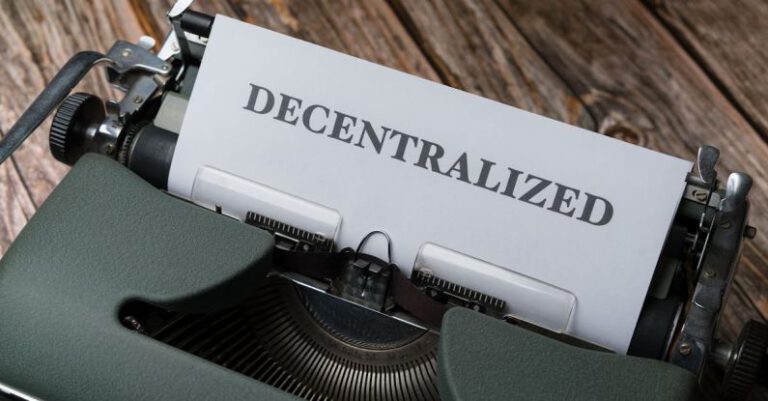
Blockchain technology has revolutionized various industries, offering a secure and transparent way to conduct transactions and store data. One of the most significant applications of blockchain is in developing decentralized applications (DApps). These apps run on a peer-to-peer network of computers rather than a centralized server, providing enhanced security and immutability. To ensure the success of blockchain app development, it is essential to follow best practices that can help developers create efficient and reliable applications.
Understanding the Requirements of Your Application
Before diving into the development process, it is crucial to have a clear understanding of the requirements of your blockchain application. Determine the problem you are trying to solve and how blockchain technology can provide a solution. Consider factors such as scalability, security, and consensus mechanisms that align with your app’s objectives. By defining the requirements upfront, you can streamline the development process and ensure that the final product meets the desired outcomes.
Choosing the Right Blockchain Platform
Selecting the appropriate blockchain platform is a critical decision that can significantly impact the success of your DApp. There are several blockchain platforms available, each with its own set of features and capabilities. Ethereum, Hyperledger Fabric, and EOS are among the popular choices for developing blockchain applications. Evaluate the scalability, security, transaction speed, and consensus mechanisms offered by each platform to determine the best fit for your project. Consider factors such as community support, documentation, and developer tools provided by the platform to facilitate the development process.
Implementing Smart Contracts Effectively
Smart contracts are self-executing contracts with the terms of the agreement directly written into code. They automate the execution of transactions and enforce the rules defined within the contract. When developing blockchain applications, it is crucial to implement smart contracts effectively to ensure the integrity and security of the transactions. Follow best practices for writing smart contracts, such as using secure coding standards, testing thoroughly, and implementing proper error handling mechanisms. By paying attention to the design and implementation of smart contracts, you can prevent vulnerabilities and ensure the reliability of your DApp.
Ensuring Security and Compliance
Security is a top priority when developing blockchain applications, especially considering the sensitive nature of the data and transactions involved. Implement robust security measures to protect against potential threats such as hacking, unauthorized access, and data breaches. Use encryption techniques to secure data transmission and storage, implement multi-factor authentication for user access, and conduct regular security audits to identify and address vulnerabilities. Additionally, ensure compliance with regulatory requirements and data protection laws to maintain the trust of users and stakeholders.
Optimizing Performance and Scalability
Scalability is a common challenge faced by blockchain applications, especially as the number of users and transactions grows. To address scalability issues, optimize the performance of your DApp by implementing efficient consensus algorithms, reducing latency, and enhancing transaction processing speed. Consider using off-chain solutions such as state channels and sidechains to improve scalability without compromising security. Test the performance of your application under different load conditions to identify bottlenecks and optimize the architecture for enhanced scalability.
Collaborating with the Community
Engaging with the blockchain community can provide valuable insights, resources, and support for your DApp development project. Join developer forums, attend conferences, and participate in hackathons to network with industry experts and enthusiasts. Collaborate with other developers, share knowledge and best practices, and contribute to open-source projects to leverage the collective expertise of the community. By fostering a collaborative environment, you can accelerate the development process, address challenges effectively, and stay updated on the latest trends and innovations in blockchain technology.
Incorporating User Feedback and Iterating
Continuous improvement is key to the success of any blockchain application. Gather feedback from users, stakeholders, and beta testers to understand their experiences, preferences, and pain points. Use this feedback to iterate on your DApp, address usability issues, and enhance the user experience. Implement agile development practices to adapt to changing requirements and incorporate new features based on user feedback. By prioritizing user satisfaction and responding to feedback promptly, you can create a successful and user-friendly blockchain application that meets the needs of your target audience.
Embracing Innovation and Emerging Technologies
Blockchain technology is constantly evolving, with new innovations and technologies emerging regularly. Stay updated on the latest trends in blockchain development, such as decentralized finance (DeFi), non-fungible tokens (NFTs), and blockchain interoperability solutions. Embrace innovation and experiment with new technologies to enhance the functionality and capabilities of your DApp. Explore opportunities for integrating emerging technologies such as artificial intelligence, Internet of Things (IoT), and decentralized storage solutions to create a more robust and versatile blockchain application.
Conclusion: Striving for Excellence in Blockchain App Development
Developing blockchain applications requires a strategic approach, attention to detail, and a commitment to excellence. By following best practices such as understanding requirements, choosing the right platform, implementing smart contracts effectively, ensuring security and compliance, optimizing performance and scalability, collaborating with the community, incorporating user feedback, and embracing innovation, developers can create successful and sustainable DApps. With a focus on quality, security, and user experience, blockchain app developers can unlock the full potential of this transformative technology and drive innovation in various industries.





